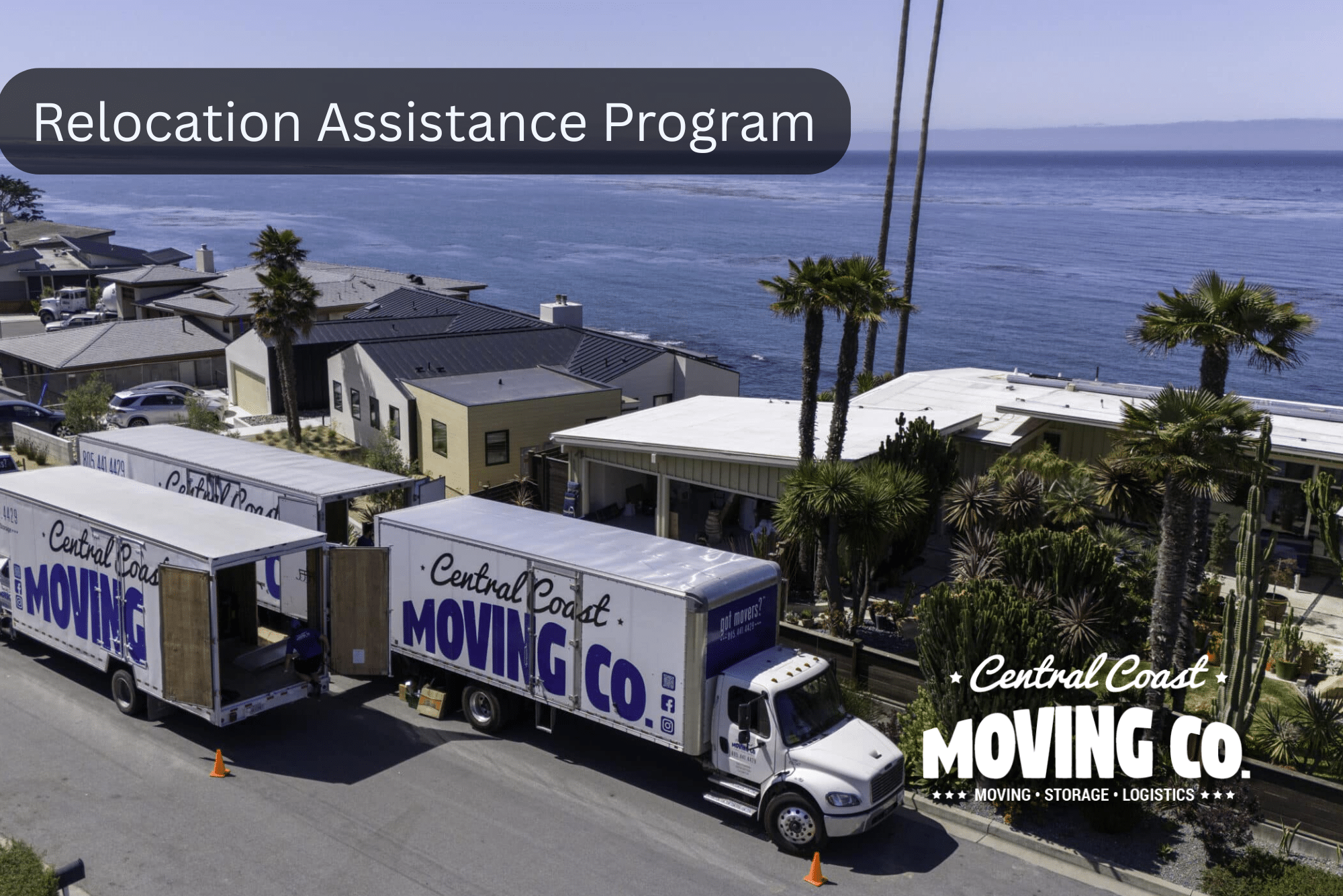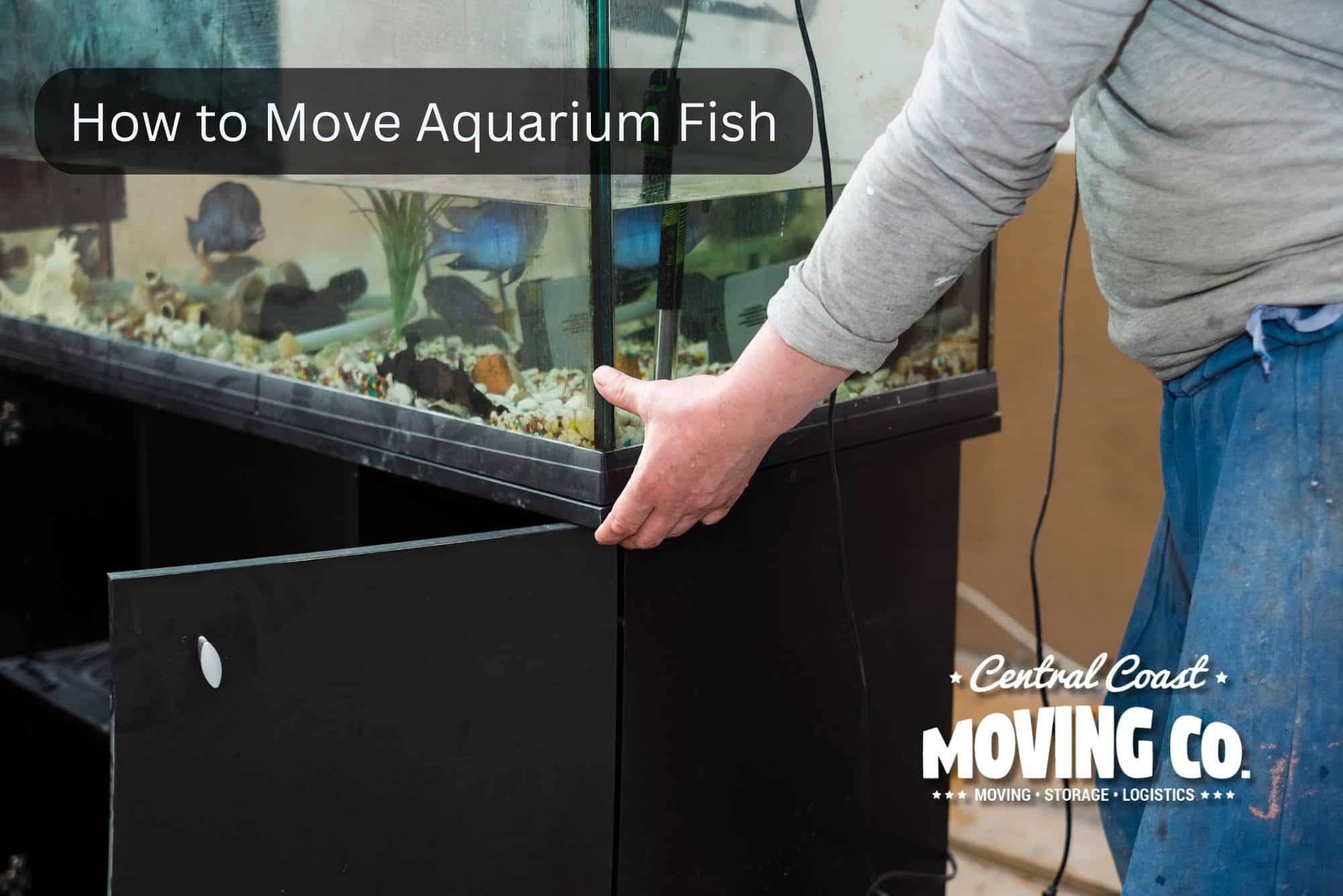When you’re preparing for a move, clothes might not be the first thing on your checklist, but they should be. Between delicate fabrics, awkward hangers, and overstuffed drawers, clothing presents its own unique set of challenges during a relocation. Anyone who’s ever unpacked a mountain of wrinkled clothes or hunted through unlabeled boxes for a work shirt on the first day in a new place knows the pain all too well. Poor packing can quickly turn your wardrobe into a huge mess of tangled hangers and disorganized clothing.
That’s why knowing the best way to move clothes isn’t just about efficiency. It’s about protecting your wardrobe and your sanity. This guide walks you through proven methods to pack clothing for any type of move, with practical advice for solo movers and busy families alike.
We’ll also share pro tips from Central Coast Moving, based right here on the California coast. Our team has helped hundreds of households move everything from beachwear to winter wardrobes, and we know a thing or two about making sure your clothes arrive wrinkle-free and ready to wear.
Whether you’re relocating from a San Luis Obispo apartment near Cal Poly or upgrading to a family home in Arroyo Grande, this article is your go-to resource for smart, stress-free clothing transport. You’ll find effective solutions for moving clothes efficiently and keeping your wardrobe organized throughout the process.
Why It Matters: Protecting Your Clothes During a Move
It might be tempting to just toss your clothes into whatever bags or boxes you have lying around. After all, it’s just clothing, how hard can it be?
The truth is: packing clothes incorrectly is one of the most common (and most costly) moving mistakes people make. Here’s why.
Clothes Are Vulnerable to DamageClothing is susceptible to a range of issues during a move. Wrinkling is the most obvious, especially for dress shirts, jackets, dresses, and business attire. But it’s not the only concern. Fabrics can rip, buttons can snag, and moisture from weather or condensation in moving trucks can result in mildew or stains. Careful packing is essential to ensure your clothes arrive in pristine condition.
You Can Lose Track of EssentialsEver arrived in your new home and couldn’t find your underwear or your child’s school uniform? When clothes are packed without a clear system, the disorganization adds frustration during unpacking—and can lead to lost or misplaced items.
Poor Packing Wastes Time and EnergyWhen you don’t use a proper strategy, you end up spending more time ironing, reorganizing, and even re-washing clothes. That means more laundry and less time enjoying your new space. Plus, inefficient packing takes up more truck space, potentially increasing your moving costs. To avoid last-minute stress and disorganization, start packing early.
Smart Packing Saves You MoneyIf you’re hiring a moving service, organized clothing systems help pros load your items faster and safer. That can reduce labor time and prevent damage that leads to costly replacements. Plus, you’ll avoid wasting money on last-minute purchases because you can’t find what you need. Investing in the right packing supplies, such as wardrobe boxes and plastic bins, can help protect your wardrobe and streamline the moving process.
It Sets the Tone for Your New Home
Starting fresh in a new home should feel exciting, not like a chaotic scramble to find clean socks. Packing your wardrobe with care ensures you can unpack methodically, settle in quicker, and feel more at home from day one. Organized packing also helps you transition smoothly into your new house, making it easier to keep your clothes in good condition and set up your space efficiently.
From formal wear to flip flops, every item in your closet deserves protection, and with the right approach, it’s easier than you think.\
The Best Way to Move Clothes: Hanging, Folded & Packed
There’s no one-size-fits-all solution when it comes to moving your clothes. The best way to move clothes depends on a few key factors: the types of garments you own, the distance of your move, your budget, and whether you’re handling the move yourself or hiring pros.
Let’s break down the three main categories of clothing and how to handle each one:
Hanging Clothes
Items like suits, dresses, coats, and delicate fabrics shouldn’t be crammed into a box. To avoid tangling and damage, it’s important to use the right methods to pack hangers and pack hanging clothes, ensuring your clothes hangers and garments are protected during the move. They’re prone to wrinkles, stretching, and permanent damage if handled incorrectly. Hanging clothes should remain on hangers, ideally inside wardrobe boxes, garment bags, or protected by the DIY trash-bag method. Packing hanging clothes properly with wardrobe boxes or garment bags helps prevent creasing and keeps clothes hangers organized. This approach keeps your garments upright, organized, and ready to hang as soon as you arrive.
Folded Clothes
T-shirts, jeans, gym clothes, and other casual wear can be folded or rolled and packed into boxes, drawers, or suitcases. When you fold clothes, especially structured or delicate garments, you help maintain their shape and reduce the risk of deep creases, while rolling is ideal for maximizing space and minimizing wrinkles in more flexible items.
These items are typically more resilient to creases and pressure, and they pack more efficiently when compressed. Rolling your clothes can help you fit more clothes into each box or suitcase by taking up less space, making your packing process more efficient.
You can also use vacuum-sealed bags to save space. This is especially helpful if you’re working with a compact moving vehicle or trying to cut down on the number of boxes. Careful packing and folding techniques can help your garments enjoy longer wear by preventing damage during the move.
Specialty Items
Wedding dresses, uniforms, performance costumes, or vintage garments often need special treatment. These high value and delicate items require extra care and enough protection to prevent damage during the move. They may need custom garment bags, added padding, or even climate-controlled transportation. If you’re moving locally, say, from Atascadero to San Luis Obispo, Central Coast Moving can help coordinate the right setup to keep specialty garments pristine.
Understanding these categories ensures you’re not over-preparing or under-protecting any part of your wardrobe. Using garment bags or custom coverings adds an extra layer of protection for delicate garments during the move. The goal is a smooth transition from your old closet to your new one, with every item intact and ready to wear.
How to Move Hanging Clothes
If you’re wondering how to move hanging clothes without turning your closet into a mess of wrinkled sleeves and tangled hangers, you’re not alone. Moving hanging clothes can quickly become disorganized if there is too much space in boxes or containers, causing items to shift, tangle, or wrinkle during transit. Hanging clothes present one of the biggest logistical headaches during a move—but when done right, they’re actually the easiest to manage.
Here are four tried-and-true methods to move hanging garments without stress:
Wardrobe Boxes (Best Overall Method)
Wardrobe boxes are tall, sturdy cartons equipped with a metal hanging bar across the top. This lets you transfer your clothes directly from your closet into the box without folding or crushing them. These boxes are ideal for dresses, blouses, suits, jackets, and formal wear. Wardrobe boxes are one of several types of moving boxes designed specifically for clothing.
Pros:
- Zero wrinkles
- Fast to pack and unpack
- Keeps garments sorted
Cons:
- Takes up more space than standard boxes
- Slightly more expensive
- Plastic boxes can be a durable, stackable alternative for some items, but may not be ideal for hanging garments
For customers moving from a home near Paso Robles Wine Country, where closet space is often customized or walk-in style, wardrobe boxes are the go-to solution to maintain closet integrity during transit.
For added stability during transport, use plastic moving wrap to secure wardrobe boxes or wrap dressers after packing clothes inside.
The Trash-Bag Hack (Best DIY Option)
If you’re on a tight budget or doing a last-minute pack, this classic hack works surprisingly well. Just group 10–15 hanging items together, pull a large trash bag up from the bottom, and poke the hanger hooks through a small hole at the top. Tie the bottom to secure it and keep the bundle from dragging or opening during the move. Using garbage bags in this way provides basic protection for your clothes and hangers, shielding them from dust, dirt, and minor moisture during transport.
Pros:
- Inexpensive
- Easy and fast
- Prevents dust and grime
- Garbage bags are convenient and cost-effective for quick moves
Cons:
- Less protective than boxes
- Not ideal for long-distance moves
- A single garbage bag may not offer enough protection for delicate or high-value items
This method works well for quick relocations within the Central Coast, like going from a rental in Grover Beach to a new apartment in Arroyo Grande.
Portable Garment Racks
If you already own a garment rack (or can borrow one), these can be a great option, especially for transporting large volumes of hanging clothes over short distances. Simply roll the rack into your moving truck or trailer and stabilize it to prevent tipping. Make sure the clothes inside the garment rack are secured to prevent shifting during transport.
Pros:
- High capacity
- Great for home-to-home transfers
Cons:
- Not ideal for stairs or long drives
- Takes effort to secure in vehicle
Garment Bags for Special Items
For wedding dresses, uniforms, and dry-clean-only garments, invest in quality garment bags. Choosing the right garment bag can make a significant difference in protecting your most important wardrobe pieces. They shield clothing from dust, moisture, and UV damage and are ideal for your most important wardrobe pieces.
Throughout your move, remember that keeping clothes on hangers is more than just convenient, it’s a strategic choice that protects your investment. Whether you’re using wardrobe boxes, trash bags, or garment bags, Central Coast Moving can help you choose the right option for your closet and your move.
Best Way to Pack Clothes for Moving (Folded & Boxed)
When it comes to folded clothes (t-shirts, jeans, pajamas, and gym wear) the goal is to maximize space without sacrificing organization or fabric care. The best way to pack clothes for moving isn’t about fancy techniques, but smart, intentional preparation. For non hanging clothes, the best way to pack is to use durable, stackable plastic bins or sturdy cardboard boxes to keep them organized and protected during the move.
Here’s how to do it right:
Start with a Clothing Purge
Before packing anything, go through your wardrobe and declutter. If you haven’t worn it in a year, doesn’t fit, or is out of style, donate it. This will significantly reduce your load and make the moving process less overwhelming. Many clients in San Luis Obispo have found that donating to local shelters or thrift shops before a move makes unpacking in the new home feel lighter.
Choose the Right Containers
Different types of folded clothing call for different containers:
- Cardboard boxes: Standard option for general clothing; label by category (e.g., “Kids – Winter”)
- Suitcases with wheels: Great for heavy clothing like jeans or jackets, easy to move and sturdy
- Plastic bins: Useful for off-season items going into storage after the move
- Duffel bags: Versatile, lightweight, and practical for packing clothing, especially for quick access or short-term needs. Duffel bags are a great alternative or supplement to suitcases and boxes, helping manage space efficiently.
- Dresser drawers: If you’re hiring a full-service moving company, ask if your dresser can be moved with clothes still inside (we do this when possible at Central Coast Moving). Be mindful of extra weight—overloading dresser drawers with clothing can make them difficult to transport and may damage the furniture.
Make sure whatever you use is clean and dry. no one wants their favorite hoodie smelling like a garage.
Roll or Fold Strategically
Rolling clothes can save a surprising amount of space, especially for soft, thin items like t-shirts, leggings, and loungewear. It also helps prevent creases. Heavier or structured pieces (like sweaters or chinos) are better folded neatly to avoid bulk.
A mix of both methods often works best—roll what you can, fold what you must. For delicate items such as scarves or accessories, wrap them in tissue paper before packing to protect them from dust, moisture, and damage during the move.
Vacuum-Sealed Bags for Space Saving
If you’re tight on space or planning a long-distance move, vacuum-sealed bags are a game-changer. They’re especially helpful for bulky clothing like winter coats or blankets, cutting down volume by as much as 50%.
Just remember not to overdo it, clothing left compressed for too long can lose shape. If you’re moving nearby (like from Los Osos to Morro Bay), regular folding methods might be enough. As a budget-friendly alternative, you can use old sheets to wrap and protect your clothes, a technique known as the ‘Sheet Wrap’, which offers more protection than trash bags and works well for in-town moves.
Label Everything Clearly
Once clothes are packed, label boxes on multiple sides with what’s inside and which room they belong to. Use terms you’ll understand later—“Sarah’s Summer Tops” is more helpful than “Box #3.” Trust us, future-you will thank you.
Easiest Methods

Sometimes, all you want is the simplest route. You don’t need the “perfect system” or color-coded inventory sheets—you just want to move your clothes fast without turning your life upside down.
These strategies are designed to make your move as hassle free as possible, so you can focus on settling into your new place.
If that sounds like you, these quick strategies will help you keep things simple without creating more work down the line.
Keep Clothes on Hangers Whenever Possible
This is hands-down the easiest way to move clothing. Use wardrobe boxes or the trash-bag hack (mentioned earlier) to keep hangers intact and avoid unnecessary folding, organizing, or ironing. You’ll be able to rehang your clothes in minutes at the new place.
Move Dresser Drawers as-is
If your dresser isn’t too heavy, keep clothing inside the drawers and simply secure them with plastic wrap. This keeps everything intact and saves tons of time on both ends of the move. Just be sure your moving team is okay with this approach (we do it all the time at Central Coast Moving when appropriate).
Use What You Already Have
Don’t spend extra money on new boxes if you already have luggage, tote bags, or laundry baskets. These can be filled with clothing and stacked easily in your vehicle or the moving truck.
Prioritize a “First Night” Bag
Pack a suitcase or duffel with the essentials you’ll need in the first 48 hours after your move:
- 2–3 outfits
- Pajamas
- Toiletries
- Undergarments
- Work clothes, if needed
This way, even if the rest of your boxes are still sealed, you won’t be digging through bags trying to find socks or a clean shirt.
Avoid Overthinking It
Don’t let the Pinterest-perfect moving guides make you feel like you’re doing something wrong. If your system keeps your clothes clean, intact, and accessible, it’s a good system.
Tips for Transporting Clothes on Hangers
If you’ve decided to keep your clothes on hangers, you’ll want to make sure they’re secure and organized during the transition. Packing hangers efficiently is important to prevent tangling and damage during the move. Nothing’s worse than a tangled pile of hangers or your favorite blazer slipping to the floor mid-move.
Here’s how to transport clothes on hangers like a pro:
Bundle Hangers with Zip Ties or Rubber Bands
Start by grouping clothes in small, manageable bundles, around 10–15 garments per group is a good rule of thumb. Then, secure the top of the hangers with a rubber band or zip tie. This prevents shifting, hanger tangles, and individual items falling out in transit.
This simple trick also makes unpacking easier, each bundle can go straight back into your closet rack, organized and intact.
Use Wardrobe Boxes Strategically
If you’re using wardrobe boxes, don’t just toss things in. Load your clothes in reverse order (last in = first out) based on how you want to unpack. You can also sort by person, season, or clothing type. Add a note on the outside of each box to remind yourself what’s inside.
Bonus tip: Secure the hangers to the bar with twist ties to prevent them from sliding side to side during transport.
Reinforce the Base of Boxes
Wardrobe boxes can get heavy quickly, especially if you’re transporting jackets, jeans, or layered outfits. Reinforce the bottom of the box with extra packing tape or place a towel across the bottom for added support and shock absorption during the move.
Tape the Bottom of Trash Bags (DIY Hack Users)
If you’re using the trash-bag method for hanging clothes, make sure you tie or tape the bottom shut. This keeps garments clean and secure. Some movers in Cambria prefer to double-bag clothes for added strength and moisture resistance, especially during foggy mornings or coastal weather.
Organize by Occasion or Use
Instead of just bundling everything together randomly, consider packing clothes by category:
- Work attire
- Casual wear
- Formalwear
- Kids’ clothing
- Seasonal items (winter jackets, swimsuits)
Doing this makes it faster to find what you need at your new place; no digging through summer shorts to find your interview outfit.
Mistakes to Avoid When Packing Clothes
Even with the best intentions, it’s easy to make mistakes when packing your wardrobe. Unfortunately, these slip-ups often lead to damaged clothing, disorganized unpacking, or unnecessary stress.
Here are the most common pitfalls—and how to avoid them:
❌ Overstuffing Boxes
This is mistake #1, hands down. Whether it’s a moving box, suitcase, or dresser drawer, stuffing too much into one container increases the risk of damage. Seams can tear, boxes can break, and clothes become a wrinkled, unmanageable mess.
Pro Tip: If the lid won’t close easily, it’s too full.
❌ Leaving Clothes Loose in the Truck
Tossing clothes loosely into the moving truck, especially hanging clothes, is a recipe for disaster. They’ll fall, bunch up, and could end up covered in dust or dirt. Always secure them in containers, bags, or designated wardrobe areas in the truck.
One customer relocating from Shell Beach learned this the hard way when her vintage coats tumbled during a bumpy road segment and required a full dry-cleaning. Trust us, it’s not worth it.
❌ Not Labeling Boxes Clearly
You’d be surprised how many people forget this step. When you don’t label your clothing boxes, unpacking turns into a guessing game. And good luck finding your workout clothes the night before your first gym visit in your new town.
Pro Tip: Label not just the room, but the type of clothing inside—for example, “Master Bedroom – Sweaters & Scarves.”
❌ Ignoring Weather Conditions
Moving during a heatwave? A rainy day? Humid coastal fog? Weather plays a huge role in how your clothing arrives. Without proper sealing or water-resistant bags, fabrics can absorb moisture, wrinkle severely, or even mildew.
In coastal cities like Morro Bay, fog and damp air are common. Use plastic bins, sealed bags, or double-layer trash bags for added protection if your move is scheduled for a humid or wet day.
❌ Forgetting to Pack an Essentials Bag
Too often, movers pack every last item of clothing—only to realize they need an outfit for work, a change of clothes for the kids, or pajamas. Always pack a 2–3 day essentials bag with everything you’ll need immediately after arriving.
Final Checklist: Best Practices for Moving Clothes
At this point, you’ve learned all the best techniques, hacks, and tools to move your wardrobe efficiently—but when moving day comes, it’s easy to forget key details in the hustle. Use this checklist as your go-to guide to make sure your clothing arrives at your new home clean, organized, and ready to wear. After you arrive, set up your new closet efficiently by using the packing methods described, so your clothing and accessories are stored in an organized, functional space right away.
Before You Pack:
- Declutter your wardrobe – Donate, sell, or recycle anything you don’t wear.
- Sort clothes by type or owner – This will make both packing and unpacking easier.
- Check the weather forecast – Pack with climate in mind, especially for moves around the Central Coast.
For Hanging Clothes:
- Use wardrobe boxes or garment bags for delicate or valuable items.
- Secure bundles with rubber bands or zip ties to prevent shifting.
- Try the trash bag hack for a budget-friendly DIY solution.
- Label wardrobe boxes by category or room (“Main Closet – Business Attire”).
For Folded Clothes:
- Use suitcases, bins, or cardboard boxes—don’t overfill them.
- Consider rolling clothes to save space and minimize wrinkles.
- Vacuum-seal bulky items like winter coats or spare bedding.
- Reinforce boxes with tape and label them clearly (“Hall Closet – Sweaters”).
For Fast & Easy Moves:
- Keep dresser drawers intact (if moving company allows).
- Pack an overnight bag with 2–3 changes of clothes, toiletries, and pajamas.
- Use your own bags and containers (duffels, laundry baskets) when possible.
Common Mistakes to Avoid:
- Don’t overpack containers. This leads to broken boxes and wrinkled clothes.
- Don’t mix clothing with dirty or sharp items (like shoes or hardware).
- Don’t forget to label every single box.
- Don’t skip protection for hanging clothes, especially for long-distance or rainy-day moves.
After You Arrive:
- Unpack hanging clothes first to prevent wrinkles.
- Reorganize closets as you go—don’t dump everything at once.
- Store off-season clothes in clearly marked bins or under-bed containers.
If you’re using a full-service mover like Central Coast Moving, don’t hesitate to ask us about wardrobe boxes or garment handling. We often bring these supplies for moves across San Luis Obispo, Arroyo Grande, and Paso Robles, and we’re always happy to lend a hand with specialty items or fragile garments.
Where We Work: Serving Central Coast Cities

At Central Coast Moving, we understand that every move is different, especially along the California coast, where no two homes (or wardrobes) are the same. Whether you’re relocating a small closet from a downtown San Luis Obispo apartment or transferring a walk-in wardrobe from a Paso Robles vineyard estate, we’re here to make the process easy.
We proudly offer moving services across:
- San Luis Obispo – From Cal Poly student housing to historic downtown homes
- Arroyo Grande – Including neighborhoods near The Village and Lopez Lake
- Paso Robles – Serving both residential areas and surrounding wine country properties
- Morro Bay & Los Osos – Special care for coastal homes where weather and fog require extra protection
- Atascadero, Grover Beach, and Shell Beach – Fast, friendly, and local knowledge-driven service
Whether you’re preparing to downsize, upgrade, or relocate across the Central Coast, you deserve a team that respects your clothing, and your peace of mind. With Central Coast Moving, your wardrobe is in good hands.
Move Clothes Easily with Central Coast Moving
Moving your wardrobe doesn’t have to be a last-minute scramble or a wrinkled disaster. By planning ahead, using the right tools, and following the strategies we’ve shared, you’ll ensure your clothes arrive organized, clean, and ready to wear.
Whether you’re relocating across town or starting fresh in a new city, Central Coast Moving is here to help make the process smooth and stress-free. From carefully handling your garments to offering full-service packing and local expertise, we’re the trusted choice for moves across San Luis Obispo County and beyond. Let us take the weight off your shoulders, give us a call today!







